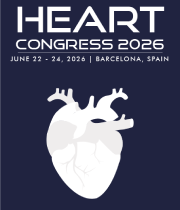Title : Brf1, A potential therapeutic target of cardiovascular disease
Abstract:
Regardless of the cause of heart disease, it eventually leads to myocardial dysfunction. To meet the body's blood transfusion function, cardiomyocytes do not proliferate continuously like other tissue cells. Cardiomyocytes only increase in its size, eventually leading to compensatory hypertrophy of the myocardium and compensatory thickening of the heart wall, namely myocardial hypertrophy. This change in the heart requires the body to synthesize large amounts of extra protein to meet the demands of the increased heart size. Myocardial hypertrophy is a critical risk factor for cardiovascular disease, including heart failure, arrhythmia, and sudden death. Myocardial hypertrophy involves both the processes of embryonic gene expression and transcriptional reprogramming. However, its mechanism remains to be addressed.
Brf1 (TF IIB-related factor 1) plays critical role in protein synthesis of body. Brf1 is a key factor to specifically modulate the transcription of RNA Pol III genes (RNA Polymerase III-dependent genes), such as tRNAs and 5S rRNA. The products of RNA Pol III genes are changed with the alteration of cellular level of Brf1. The major biofunction of Brf1 and RNA Pol III genes are to participate protein syntheses. Both Brf1 and RNA Pol III genes are essential in this process during protein synthesis. It prompts that Brf1 expression and RNA Pol III gene transcription may be increased in myocardial hypertrophy.
In past a dozen year, we have been studying the deregulation of Brf1 expression and RNA Pol III gene transcription in tumor development. Our studies have demonstrated that Brf1 expression is increased in human cancers, such as hepatocellular carcinoma, breast cancer, gastric cancer and lung cancer. High expression of Brf1 displays short survival period and worse prognosis. These studies indicate that Brf1 plays important role in tumor development. Here, we report that cellular levels of Brf1 expression is increased in the human sample of myocardial hypertrophy. This result encouraged us to deeply explore the molecular mechanism of myocardial hypertrophy. Further studies show that knock-out Brf1 results in the alteration of myocardial structure of Brf1 conditional-knock-out mouse. Ultrastructure analysis displays that Intracellular myocardium space is enlarged, liver glycogen is significantly reduced, whereas lipid droplets are increased when Brf1 knock out (Brf1-/-). These studies have opened a new insight about myocardial hypertrophy and provided a complete novel way to develop a therapeutic approach for heart disease.
Audience TakeAway
- This is fundamental study of heart diseases, which provides complete new direction:
- Brf1 expression is increased in myocardial hypertrophy;
- Overexpression of Brf1 in myocardial hypertrophy may be potential therapeutic target.



